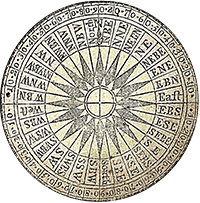In 1851, while emigrating from Illinois to the land near the Colorado and Gila River junction, the Oatman family was attacked by a small band of Yavapais or Apache Indians. Her parents and 4 siblings, were clubbed to death and her older brother Lorenzo Dow Oatman (1836-1901) was left for dead. Olive and her younger sister Mary Ann, were held captive as slaves for about a year. The girls were used as slaves to forage for food, to lug water and firewood, and for other menial tasks.
About a year after they were captured, another group of Native Americans came to trade with the tribe. This group was made up of Mohave Indians. The daughter of the Mohave Chief Espaniole saw the girls and their poor treatment during a trading expedition. She tried to make a trade for the girls. Her captors refused, but the chief’s daughter, Topeka, was persistent and returned once more offering a trade for the girls. Eventually a deal was made and the girls were traded for two horses, some vegetables, blankets, and beads.
After being taken into Mohave custody, the girls walked for days to a Mohave village along the Colorado River. The girls were immediately taken in by the family of a tribal leader, Espaniole. The Mohave tribe was more prosperous than the group that had held the girls captive, and both Espaniole’s wife, Aespaneo, and daughter, Topeka, took an interest in the Oatman girls’ welfare. Aespaneo arranged for the Oatman girls to be given plots of land to farm. Oatman expressed her deep affection for these two women numerous times over the years after her captivity.
In 1855 or 1856, while the girls were living with the Mohave, Olive’s sister Mary Ann died. She was 10 or 11 years old.
When Olive was 19 years old, Francisco, a Yuma Indian messenger, arrived at the village with a message from the authorities at Fort Yuma. The fort had heard rumors that a white girl was living with the Mohaves, and the post commander requested her return, or to know the reason why she did not choose to return. At first, the Mohaves hid Olive and resisted the request. At first they denied that Olive was even white. Over the course of negotiations, some expressed fear of reprisal from whites. The messenger Francisco, withdrew to the homes of other nearby Mohaves; shortly thereafter he made a second attempt to persuade the Mohaves to part with Olive. Trade items were included this time, including blankets and a white horse, and he told the tribe that the whites would destroy the Mohaves if they did not release Olive.
After some discussion, the Mohaves decided to accept these terms, and Olive was escorted to Fort Yuma in a 20-day journey. Topeka (the daughter of Espianole and Aespaneo) went on the journey with her. Inside the fort, Olive was surrounded by cheering people.
After her return she went on a lecture tour, sharing her experiences among the Indians. Her 1860s lecture notes tell of her younger sister often yearning to join that better “world” where their “Father and Mother” had gone. She told of a time that tribe experienced a dire shortage of food supplies, and that she would have died had not Aespaneo, the matriarch of the tribe, saved her life by making food sustain her.

Olive said the Mohaves treated her better than her first captors. She most likely considered herself assimilated. She chose not to reveal herself to white railroad surveyors who spent nearly a week in the Mohave Valley trading and socializing with the tribe in February 1854. She did not know that Lorenzo had survived the massacre, she believed she had no immediate family. The Mohave treated her as one of their own.
Oatman married eventually John Brant Fairchild in 1865. They moved to Sherman, Texas. Fairchild founded the City Bank of Sherman and together they lived quietly in a large Victorian mansion. Olive wore a veil to cover the tattoo and became involved with a local orphanage. She and Fairchild never had their own children, but they did adopt a little girl and named her Mary Elizabeth after their mothers.
She is buried at the West Hill Cemetery in Sherman, Texas.
Welcome to “Sharing the Stories of History with Tim Mann”!
Meet Timothy A. Mann, a passionate historian born and raised in the heart of Shelby County, Ohio where Tim’s roots run deep in the rich soil of American history. As the author of articles and books, including “Frontier Miscellany Concerning the Miami County Ohio Militia,” “Colonel John Mann, His Kith and Kin,” and “Frontier Militia – The War of 1812,” Tim’s literary contributions have enlightened and inspired countless history enthusiasts.
Join Tim Mann on a journey through time as he shares fascinating tales, untold stories, and hidden gems from the annals of history. Let’s delve into the past together and uncover the wonders that await in “Sharing the Stories of History with Tim Mann.”



